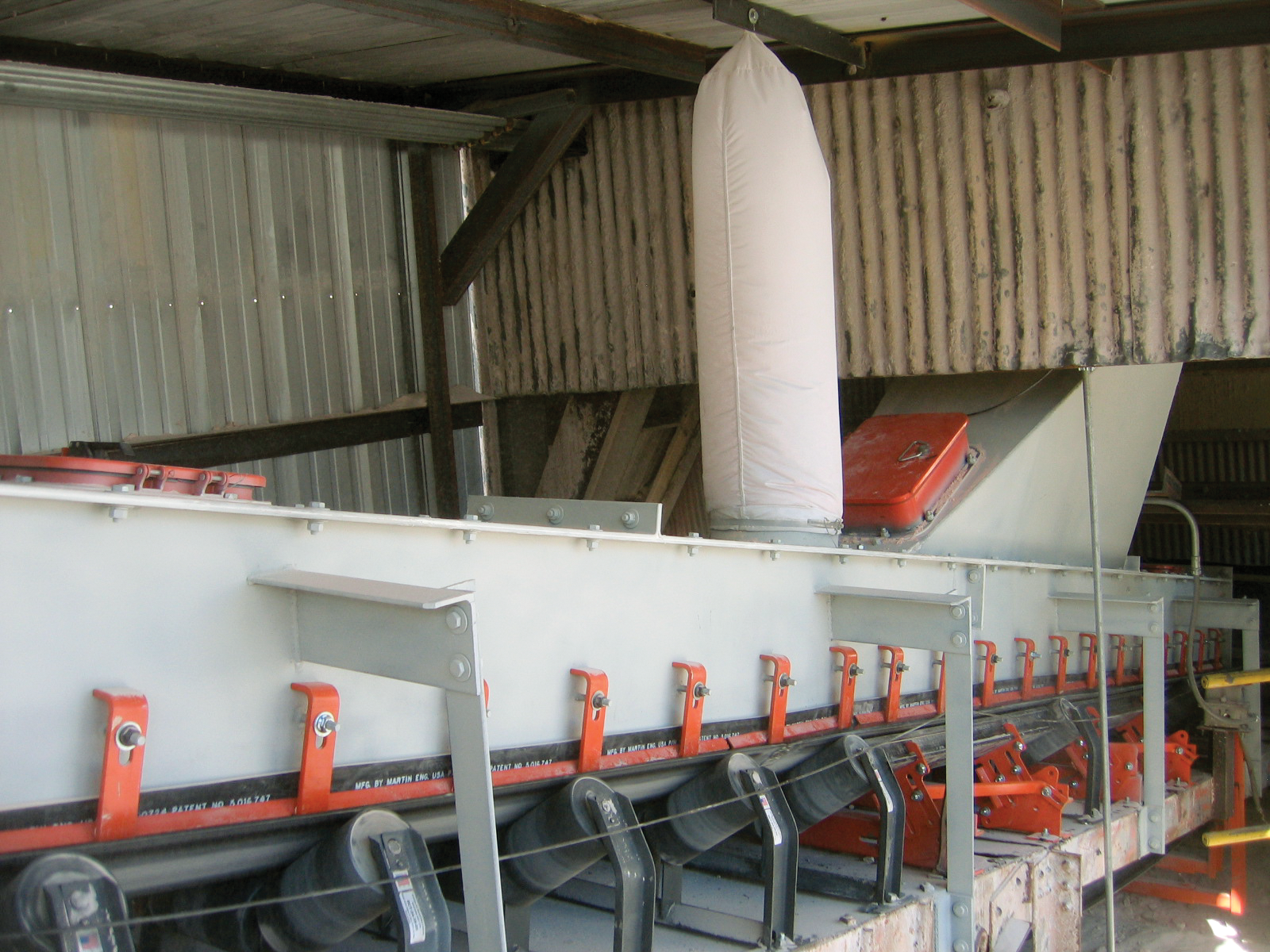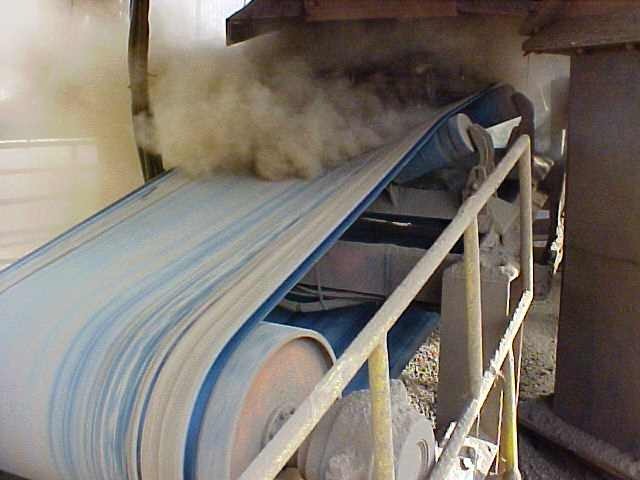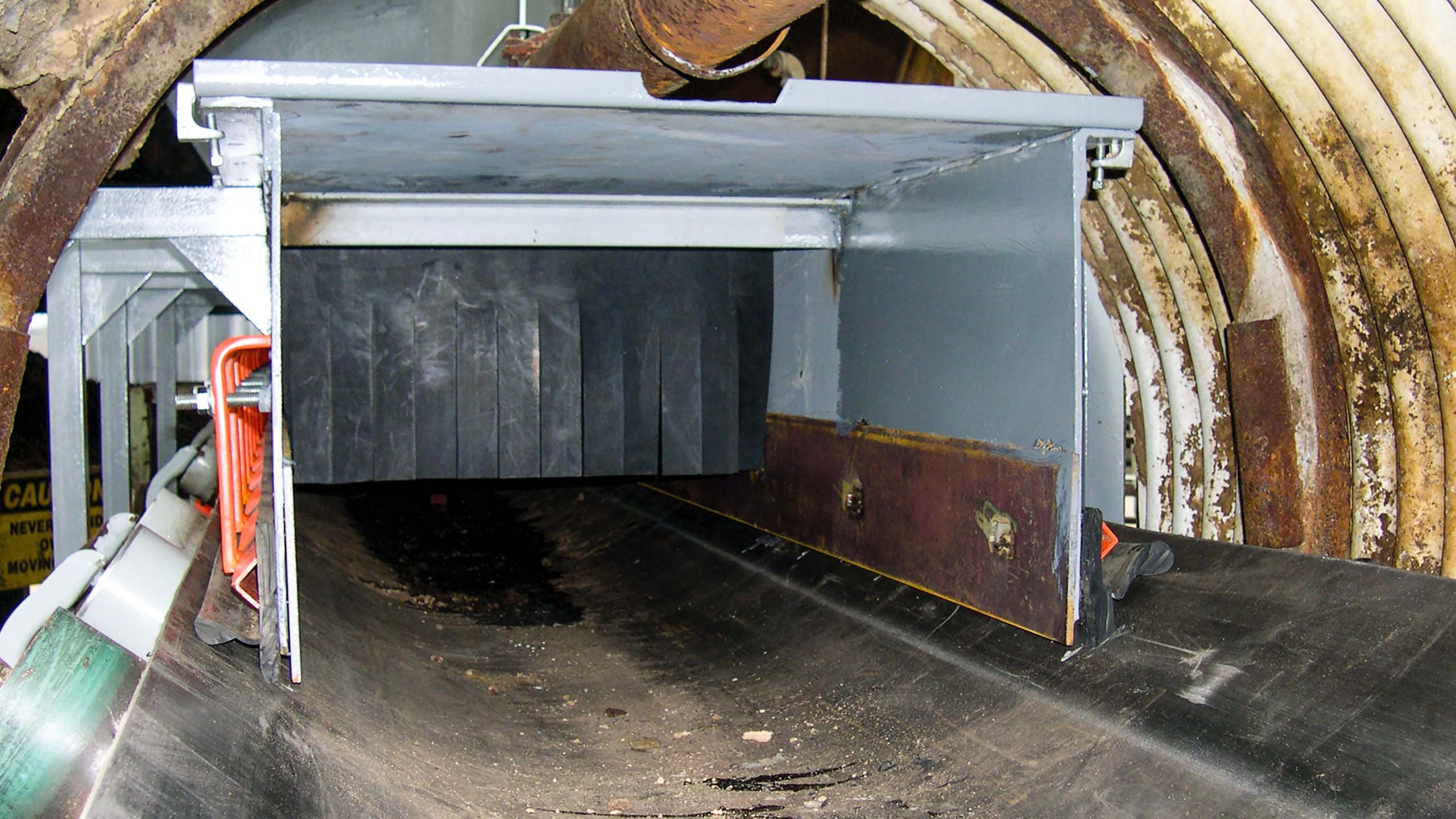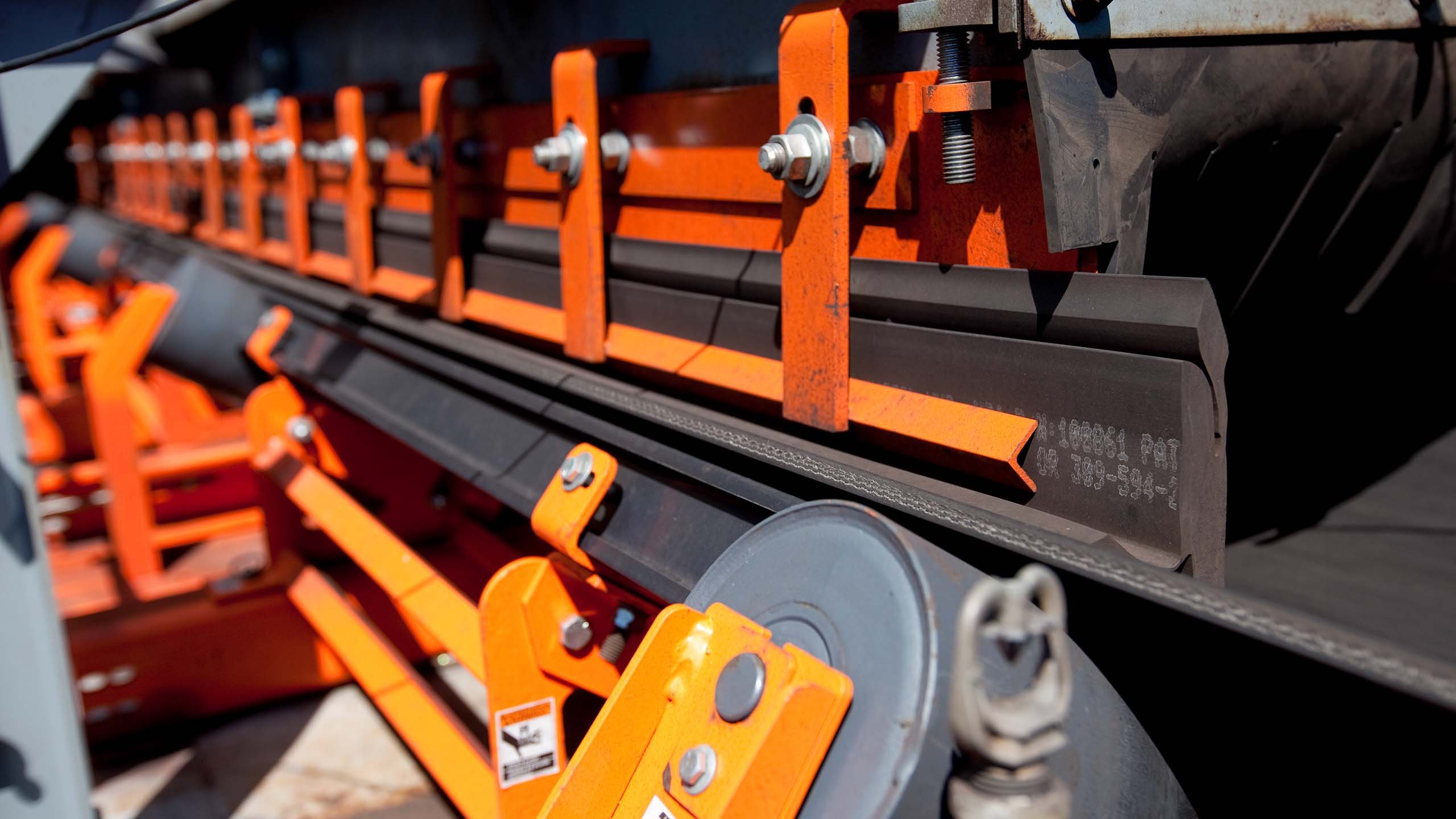Conveyor loading zones and discharge points are prime sources for the creation and release of airborne dust. There are a variety of systems to control airborne dust that can be installed at conveyor loading and unloading zones. Choice of the right system will depend on a number of factors, including the nature of the material carried, the height of drop onto the belt, and the speeds and angles of unloading and loading belts.

Depending on the characteristics of the conveyor, the load zone, and the conveyed material, passive dust-control systems—systems that do not require external supplies such as electricity or water—can be employed.
It is important that positive air pressure—the force of air moving through and away from the loading zone—is controlled in a manner that will minimize the outward pressure against the sealing system and reduce the release of dust.
One passive approach is the installation of at least one dust-collector filter bag. Dust bags can be protected from weather and still provide a method of collecting dust without the need for a baghouse central-collection system; they are often used when an enlarged settling zone is not possible or there is a large amount of generated air to control. These bags filter outgoing air to minimize the escape of dust into the plant environment. These systems consist of an open port in the roof of the skirted section with a filter bag, sock, or sleeve stretched over the top of the port. These bags can be attached with a simple circular clamp to the rim of the port. The positive air pressure is relieved through the dust bag, and the dust is captured on the inside of the bag. A transfer point may require installation of more than one of these dust bags, depending on the size and permeability of the bag and the airflow of the transfer point.
Dust bags usually feature a grommet at the top of the bag, which allows them to be hung from overhead supports. While the bag could extend without the support arm, the bag might be subject to wind or lay over on its side, vulnerable to damage. In installations where these pressure-relief bags are subject to environmental influences, such as snow or rain, the bags should be installed in a protective shelter.
Every bag has a certain airflow capacity based on the permeability of the filter material and the surface area of the bag. The size and number of bags required is directly related to the bag properties.
A dust bag is typically installed at a point one-third the length of the transfer chute downsteam from the load zone. Installation of dust curtain(s) inside the skirted area, one on each side of the bag, is recommended, because that will slow the airflow, allowing more air to exit through the dust bag.
Care should be taken to make sure there is adequate clearance above the chutework to allow for full extension of the bag and for the installation of its support structure. The dust can be released from the filter bag mechanically, by shaking manually, or even by the partial collapse of the bag when the outflow of air stops during conveyor downtime.
Dust bags might generate a static charge when used. This charge could cause a spark, which could lead to an explosion if the conditions are predisposed to it. To combat this phenomenon, bag manufacturers are weaving a stainless steel grid into the material and grounding the grid to dissipate any charge that accumulates. This dissipation can also be accomplished by weaving conductive carbon fibers into the fabric. If there is a potential for explosive dust, static-dissipating dust bags must be used.
See also: Belt Conveyor Dust Bags Part 2




















Leave Comment